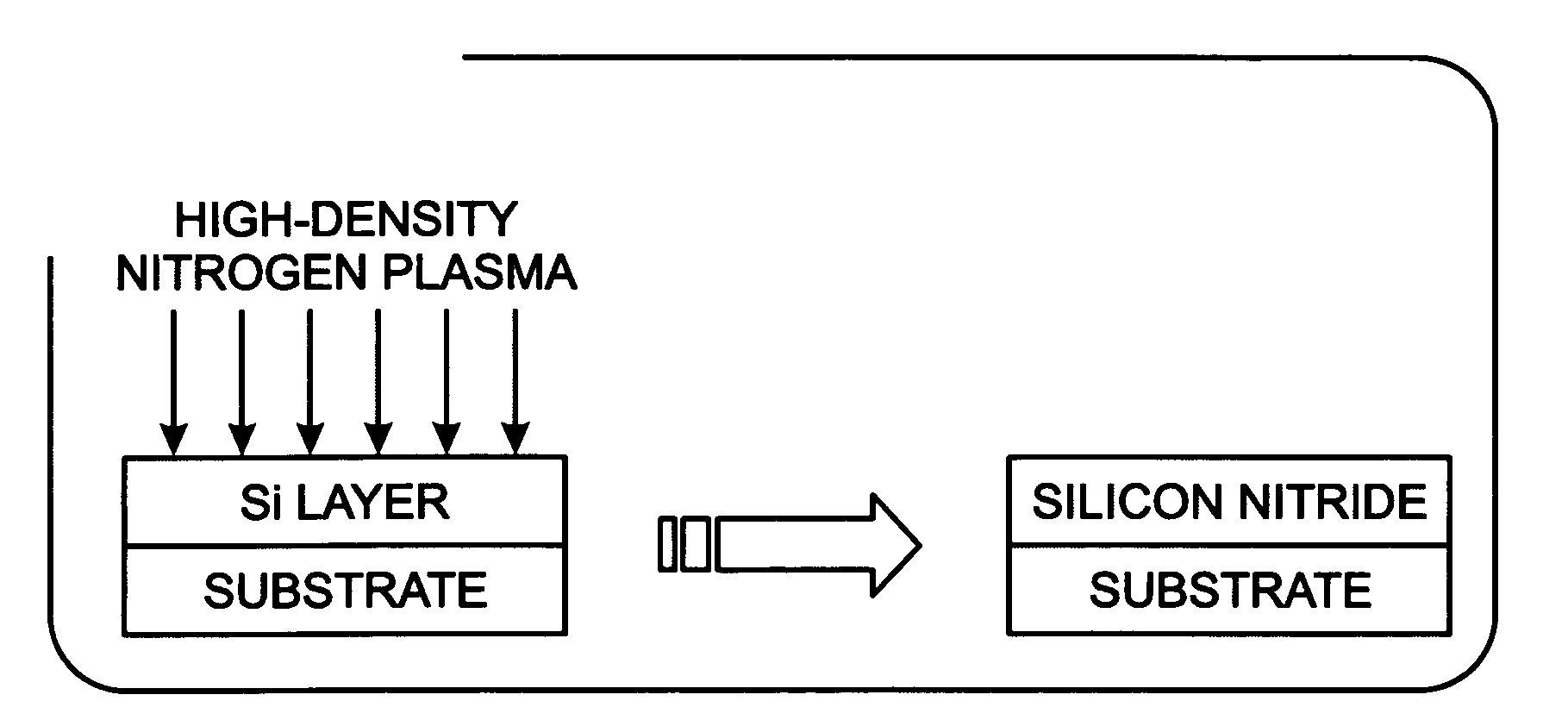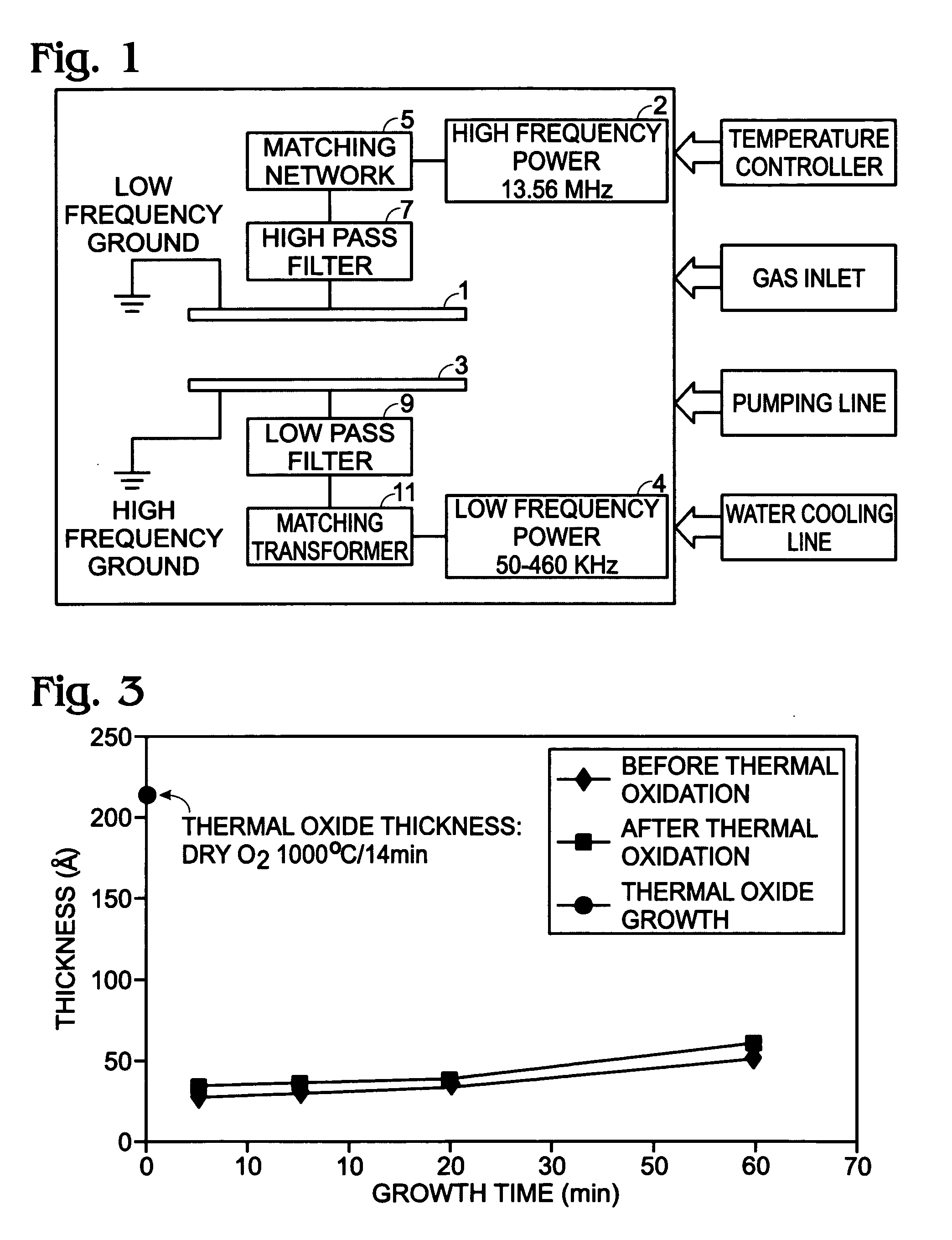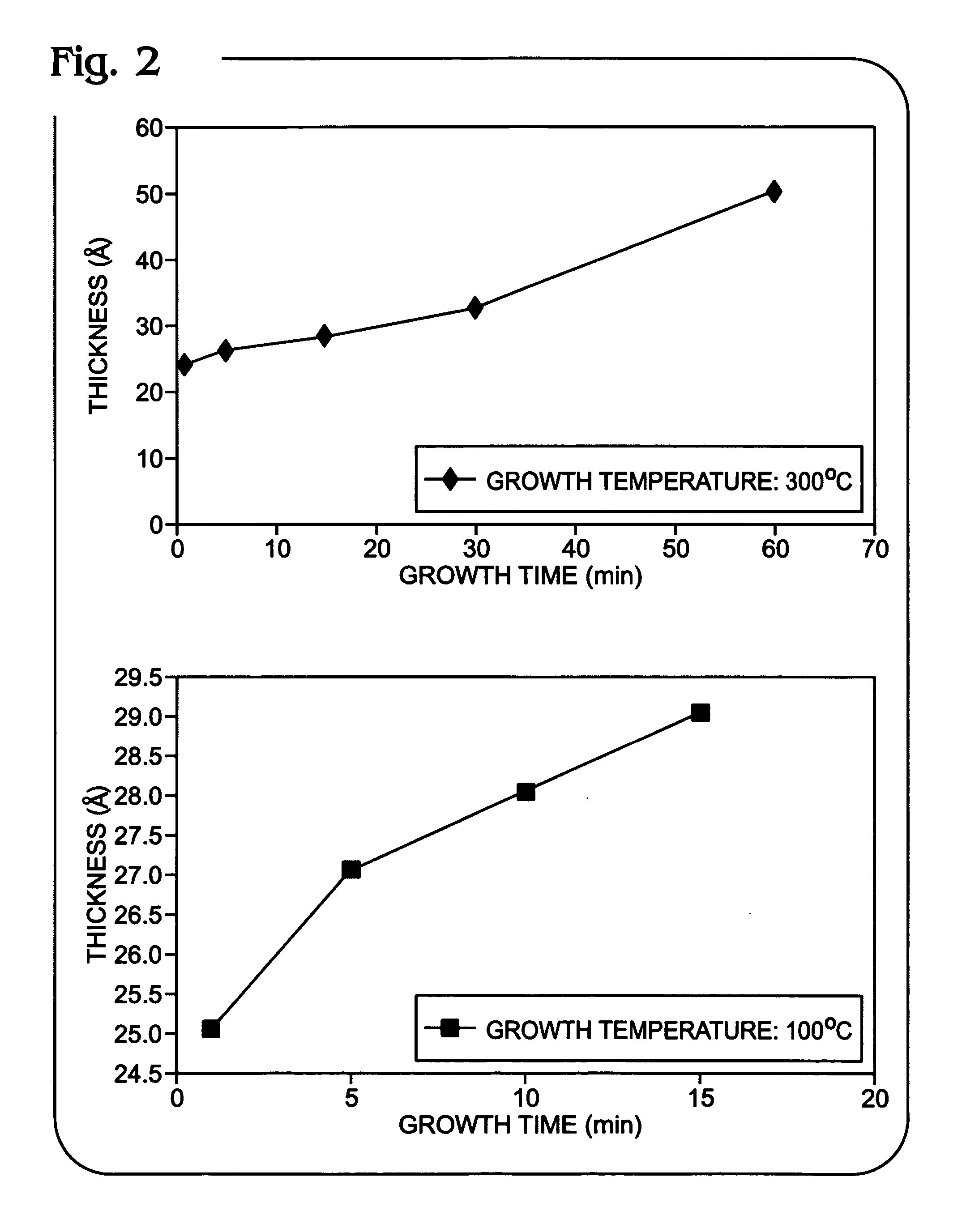High density plasma grown silicon nitride
a silicon nitride and high density technology, applied in the direction of coatings, transistors, chemical vapor deposition coatings, etc., can solve the problems of slow growth of thermal nitride, process impracticality for commercial applications, and self-limiting growth, so as to minimize any plasma-induced damage and enhance process kinetics
- Summary
- Abstract
- Description
- Claims
- Application Information
AI Technical Summary
Benefits of technology
Problems solved by technology
Method used
Image
Examples
Embodiment Construction
[0026] The present invention provides a high-density plasma based process for the low temperature growth of thermal quality silicon nitride films. The high-density plasma characteristics are effective in the low temperature (<about 400° C.) growth of silicon nitrides at growth rates exceeding those of thermal silicon nitride grown at temperatures of greater than about 1100° C. The active nitrogen radicals generated by the high-density plasma process are effective in dissociating the Si—Si bond on a silicon surface, and promoting the growth of silicon nitride layer at a processing temperature range of about 100-300° C.
[0027] The HDP nitride growth processes described herein can also be performed at temperatures higher than about 400° C. There are no inherent limitations to the HDP process that prevent the HDP process from being performed at temperatures greater than about 400° C., and as high as thermal process temperatures. However, the ability of the present invention process to g...
PUM
| Property | Measurement | Unit |
|---|---|---|
| frequency | aaaaa | aaaaa |
| pressure | aaaaa | aaaaa |
| temperatures | aaaaa | aaaaa |
Abstract
Description
Claims
Application Information
 Login to View More
Login to View More - R&D
- Intellectual Property
- Life Sciences
- Materials
- Tech Scout
- Unparalleled Data Quality
- Higher Quality Content
- 60% Fewer Hallucinations
Browse by: Latest US Patents, China's latest patents, Technical Efficacy Thesaurus, Application Domain, Technology Topic, Popular Technical Reports.
© 2025 PatSnap. All rights reserved.Legal|Privacy policy|Modern Slavery Act Transparency Statement|Sitemap|About US| Contact US: help@patsnap.com



